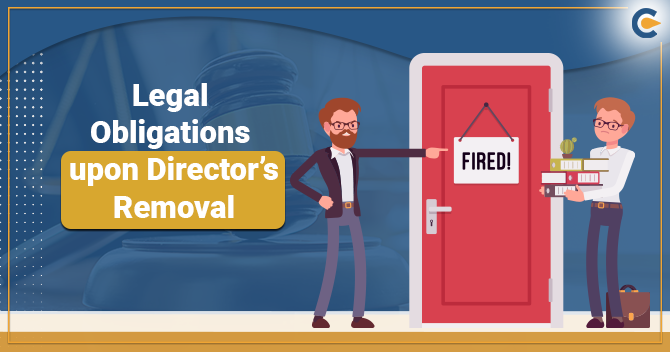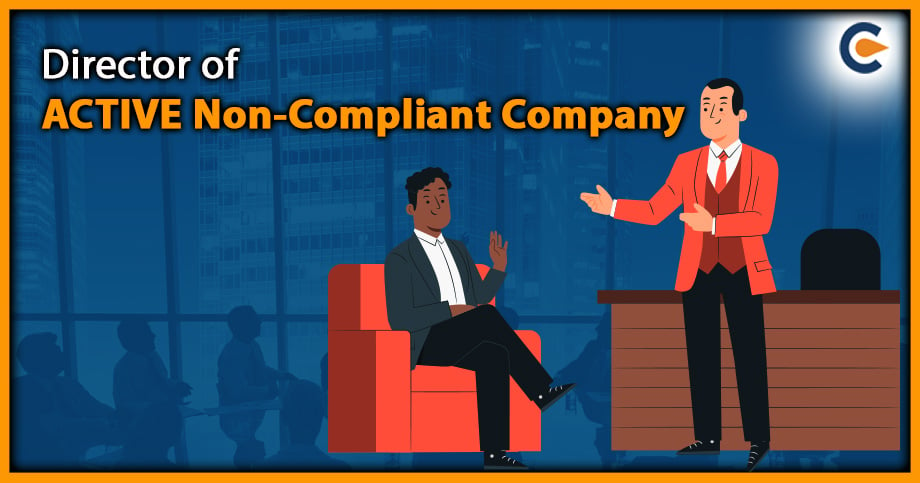In view of the Company Act, a shareholder holds the right to remove the director from an organization before the expiration of his/her tenure, except appointed by the Central Government. Removal needs filing of same with Ministry of Corporate Affairs (MCA), RoC examines every removal with utmost care.
An organization might, by ordinary resolution, remove the active director; not being a director appointed by the Tribunal u/s 242, before the expiration of his/her tenure after giving him an opportunity of being heard. However, if the company opts to abide by the “principle of proportional representation” for the Director’s removal then the said section shall not remain withstand in effect in that case.
Conditions Cited u/s 167 & 168 (1) of Company Act, 2013 for Director’s removal
Following section demonstrates the list of grounds for the director’s removal duly mentioned under Section 167 and 168 (1) of Company Act, 2013.
Director Fails to Attend the Board Meeting For Consecutive Times
In view of Section 167 of the Companies Act, 2013, if a Director fails to attend a board meeting for a year i.e., 12 months, even after being intimated by the company via the notice, the director needs to vacant his/her position.
To remove a Director Suo-Motto by the Board
As per Section 169 of the Companies Act, 2013, the company’s shareholders can remove the active director via an ordinary resolution passed in the general meeting. Let’s dive into the procedural instructions related to the Director’s removal from the company.
Self-Submission by A Director
The company’s director may intend to vacant his/her position, then he/she can do so by passing a resolution to the company. In view of Company Act 2013, the resignation of a director asserts that the organization has some obligations to fulfill after.
The first & primary option is to be the organization passing a collective resolution to legalize the notice or resignation’s letter and commission to file form DIR 11 enclosing the reasons for the departure, as per the norms mentioned u/s 168(1) of Company Act, 2013[1]. In addition to filing DIR 11, the company needs to render the notice or resignation’s letter compulsorily.
Following documents will be required for this purpose
- Notice regarding the resignation filed with the Company
- Proof of dispatch
- Acknowledgment of form, if received.
Read our article:A Detailed Outlook on the Roles of Directors and Shareholders in a Company
Procedural Instructions related to the Director’s removal
| Special Notice under Section 115 of Companies Act | A special notice aiming to remove director by the specified number of members has to be issued at least before 14 days prior to the concerned meeting at which it has to moved excluding the event on which the notification is served & the day of the meeting. |
| Notice to member issued by the company to Members | The company shall promptly after receiving the notification ought to communicate with its members by the notice regarding the resolution in the way it does at the time of a general resolution. |
| Informing the Concern Director | Company should communicate with the concern director regarding the Director’s removal. |
| Conduct a General Meeting | Conduct a general meeting to avail permission of members in majority for the removal of director. |
| Right to be Heard | The director will be given an opportunity of being heard on the resolution at the general meeting. |
| Contacting ROC | Every change in Directorship is needed of file with Registrar of Company (RoC) in e-form namely DIR-12 within 30 days of passing of resolution. |
| Appointing new Director for filing Casual Vacancy | A casual vacancy shall be created after the removal of the existing director, by leveraging special notice he can be appointed in general meeting and such director will be intimated to Registrar of Company in same form DIR-12. |
Section 115 of Company Act, 2013
A special notice aiming to remove the existing director by the specified numbers of members of the organization has to be issued before 14 days prior to the concerned meeting, excluding the day on which the said notice is served & the day of the meeting.
A special notice needed to be given to the organization which shall be duly signed, either individually or collectively, by board members holding not less than 1% of the total voting power or holding shares on which a total sum of more the Rs 5 lakhs has been paid on the notice date.
Intimating Members via Notice Enclosing Information regarding Director’s Removal
After receiving the notice, the company shall promptly intimate its member via a notice of the resolution, in the same manner it does at the time of the general meeting.
Or
If it is not viable for the organization to share notice to the board members, it should publish it via an advertising platform such as a newspaper at least 7 days of the meeting.
Contacting Concern Director for Removal of Director
The company should share the concern regarding the Director’s removal with the concerned director.
Right to be Heard
By virtue of the legal right, the director will be given a chance to be heard out at the general meeting. In such a case, the director can exercise his right to share the concern with the board member via a written statement.
Intimation to All Shareholders
- In case of availability of time
In such case, the company will send notice along with a representation copy to its members seven days prior to a board meeting
- In case of unavailability of time
If notice remains inaccessible to the company’s board members, it will be published in an English newspaper in the state where the company’s registered office is situated. The same notice shall also need to be promulgated on the company’s website before 7 days prior to the meeting.
Protections against Removal for the concerned director
The aforesaid section not only encompasses the provision for Director’s removal but also allow them to secure their position through following arrangements:
Representation in Writing
The concerned director can provide a written statement to the company against the removal notice. Director can ask the company to communicate the said statement with the rest of the members.
The company, in response, has to share the statement with the board members via a notification. If the company fails to undertake such a task, then the director may ask for the statement to be read out at the meeting. It’s the legal right of the director to be heard orally and company must treat his/her case without prejudice.
Appeal to the Tribunal
If the organization or any distressed individual decides to go against the legal process, they can put up a case before the Tribunal, demanding the nullification of the process. The Tribunal is liable to withdraw the process if it finds that the director exercises this right to secure needless publicity for the defamatory matter. Moreover, the director is also conferred with the right to issue an order asking the director to reimburse the application cost bear by the company.
Conclusion
It is obvious from the aforesaid information that the removal of director in a company is subjected to plenty of statuary requirements. Under no circumstances, the company can remove the director without fulfilling these requirements. You can contact CorpBiz’s expert to get best of the assistance on legal proceeding related to the Director’s removal in a company.
Read our article:Companies Act 2013 Provides Procedure for the Removal of the Director











